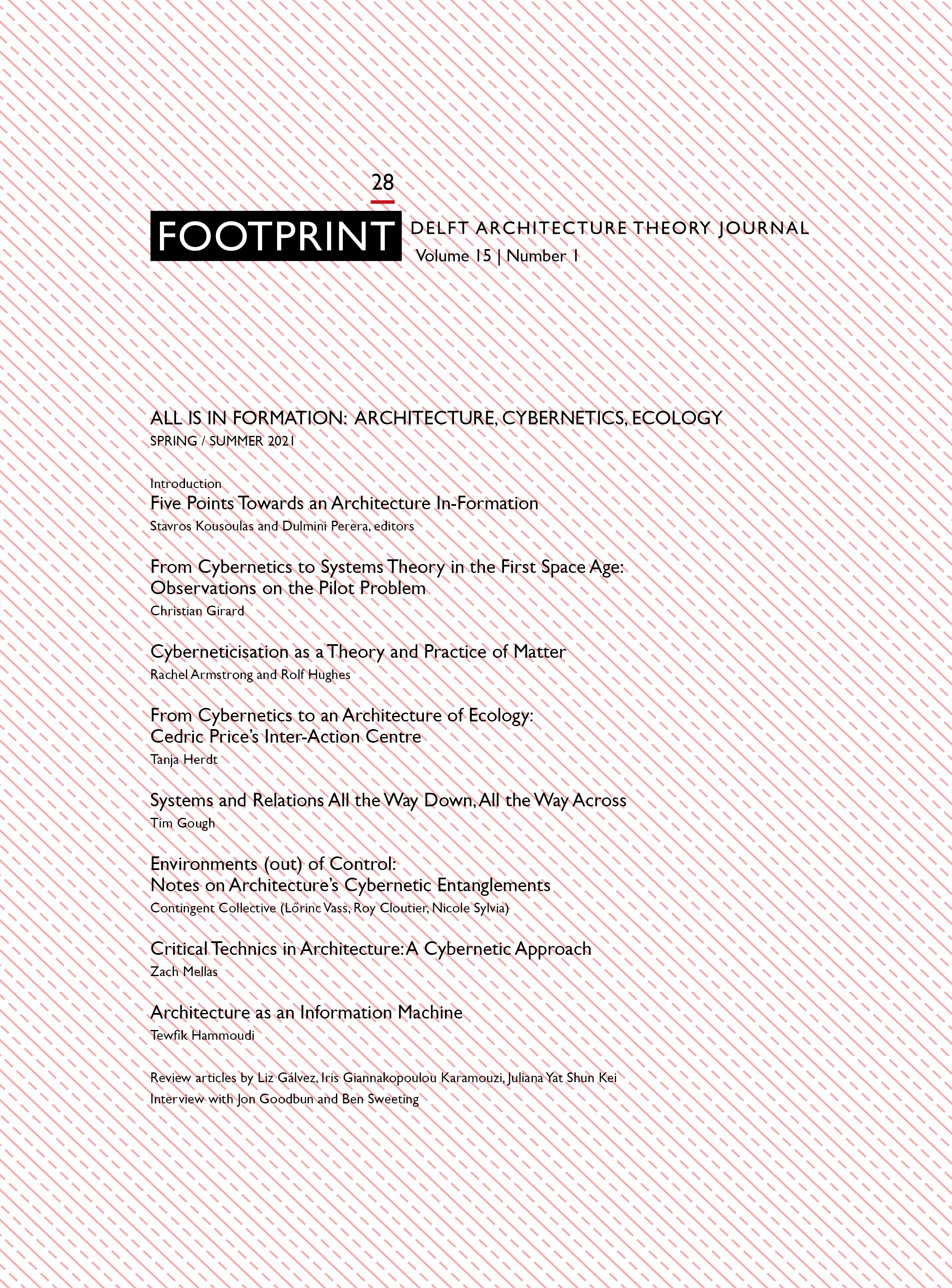Automation and the City
Constant’s New Babylon (1959 – 1974)
DOI:
https://doi.org/10.7480/footprint.15.1.4948Abstract
From 1959 to 1974, Constant Anton Nieuwenhuys developed New Babylon, a speculative city for a future society in which automation would free human life to dedicate itself to creativity, collectivity and play. This essay examines Constant’s thinking about automation and the city. Departing from Constant’s own writings, it argues that automation was not only an economic premise but also, and more importantly, a creative condition of future urban environments. As such it required a re-conceptualisation of the collective habitat. Constant’s vision, a critique of functionalist modern urbanism, imagined the city as a ‘complete environment’, part of an extended and dynamic activity that involved its inhabitants. The speculative framework of this essay wishes to situate New Babylon within the broader discourses of automation and cybernetics that dominated the cultural and scientific arena of the post-war period in the United States and Europe, as well as within the diverse genealogies and theoretical entanglements of these terrains.
References
Knabb, Ken. Situationist International Anthology. Berkeley: Bureau of Public Secrets, 2016.
Virginia Tech. ‘Situationist International Online’. Accessed October 16, 2020. https://www.cddc.vt.edu/sionline/.
Wark, McKenzie, and Ali Dur. “New New Babylon.” Digital Art, October 138 (2011): 37-56.
Wigley, Mark. Constant’s New Babylon: The Hyper-Architecture of Desire. Rotterdam: Witte de With, 1998.
Downloads
Published
Issue
Section
License
Copyright (c) 2021 Iris Giannakopoulou Karamouzi

This work is licensed under a Creative Commons Attribution 4.0 International License.
- Authors retain copyright and grant the journal right of first publication with the work simultaneously licensed under a Creative Commons Attribution License that allows others to share the work with an acknowledgement of the work's authorship and initial publication in this journal.
- Authors are able to enter into separate, additional contractual arrangements for the non-exclusive distribution of the journal's published version of the work (e.g., post it to an institutional repository or publish it in a book), with an acknowledgement of its initial publication in this journal.





